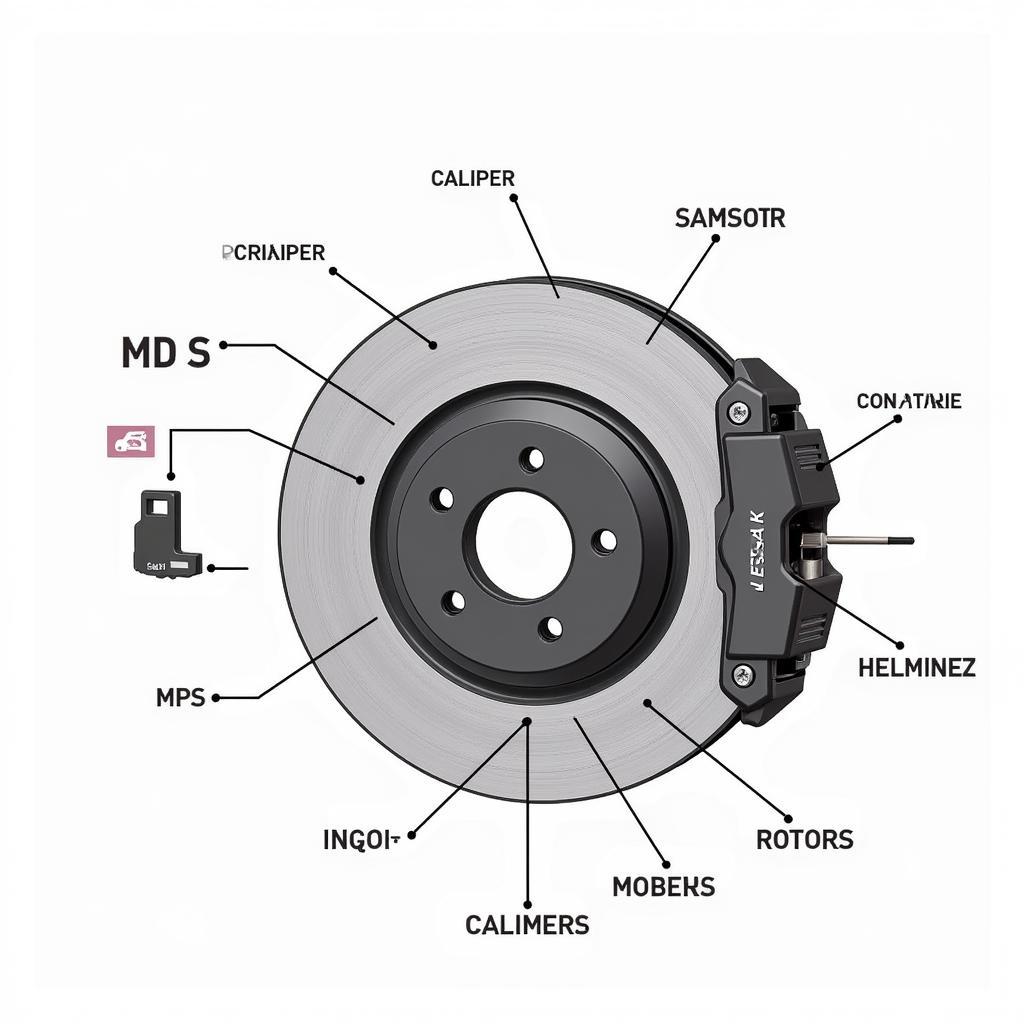The 2018 Tesla Model S is renowned for its advanced technology and exhilarating performance. However, like any sophisticated vehicle, it can occasionally display warning messages that require attention. One such message that can cause concern for Model S owners is a brake warning. This comprehensive guide delves into the common causes of brake warnings in a 2018 Tesla Model S and provides insights into troubleshooting and resolving these issues.
Potential Causes of Brake Warnings
Brake warnings in your 2018 Tesla Model S can stem from a variety of factors, ranging from minor sensor glitches to more significant system malfunctions. Here’s a breakdown of the most common culprits:
- Low Brake Fluid: Just like traditional vehicles, your Model S relies on hydraulic fluid to engage the brakes. Low brake fluid levels can trigger a warning and indicate a leak or worn brake pads.
- Faulty Sensors: Your Tesla utilizes an array of sensors to monitor various aspects of the braking system. A malfunctioning sensor, such as the wheel speed sensor or brake pedal position sensor, can send erroneous signals, leading to a warning.
- Software Glitches: As with any software-driven system, occasional glitches can occur. These glitches might disrupt communication between the braking system components and the vehicle’s computer, resulting in a false warning.
- Issues with the Regenerative Braking System: The regenerative braking system in your Model S captures energy during braking to recharge the battery. Problems within this system, such as a faulty generator or inverter, can also trigger brake warnings.
- Mechanical Problems: While less common, mechanical issues within the braking system itself, such as a malfunctioning caliper or worn brake lines, can also be the root cause of a brake warning.
 2018 Tesla Model S Brake System
2018 Tesla Model S Brake System
Troubleshooting Brake Warnings
When faced with a brake warning in your 2018 Model S, it’s crucial to address the issue promptly. Here’s a step-by-step guide to help you troubleshoot the problem:
- Check the Tesla App: Before panicking, start by checking the Tesla app on your smartphone. The app often provides more specific information about the warning message, which can help you narrow down the potential cause.
- Inspect the Brake Fluid: If the warning message suggests low brake fluid, carefully check the brake fluid reservoir under the hood. If the fluid level is low, there might be a leak, and it’s essential to contact Tesla service immediately.
- Reboot the Touchscreen: Just like restarting your phone or computer, rebooting the touchscreen in your Model S can sometimes resolve software glitches that might be causing the warning.
- Schedule a Service Appointment: If the warning persists or you suspect a more serious issue, it’s crucial to schedule a service appointment with your nearest Tesla Service Center.
Remote Diagnostics and Software Updates
One of the most significant advantages of owning a Tesla is the ability to receive remote diagnostics and software updates. Tesla’s over-the-air software updates can often address software-related issues, including those affecting the braking system. Additionally, if you contact Tesla service, they can remotely diagnose your vehicle and provide guidance on the necessary course of action.
“It’s important to remember that brake warnings are critical safety alerts,” says John Smith, a Senior Tesla Technician. “While minor software glitches can occasionally occur, it’s always best to err on the side of caution and have your vehicle inspected by a qualified Tesla technician if you encounter any persistent warnings.”
Conclusion
While brake warnings in a 2018 Tesla Model S can be unsettling, understanding the potential causes and taking the appropriate troubleshooting steps can help you address these issues effectively. Remember, Tesla’s advanced technology, including remote diagnostics and software updates, is designed to keep your vehicle running smoothly and ensure your safety on the road. If you encounter any persistent issues or have concerns about your vehicle’s braking system, always consult with a qualified Tesla technician.
